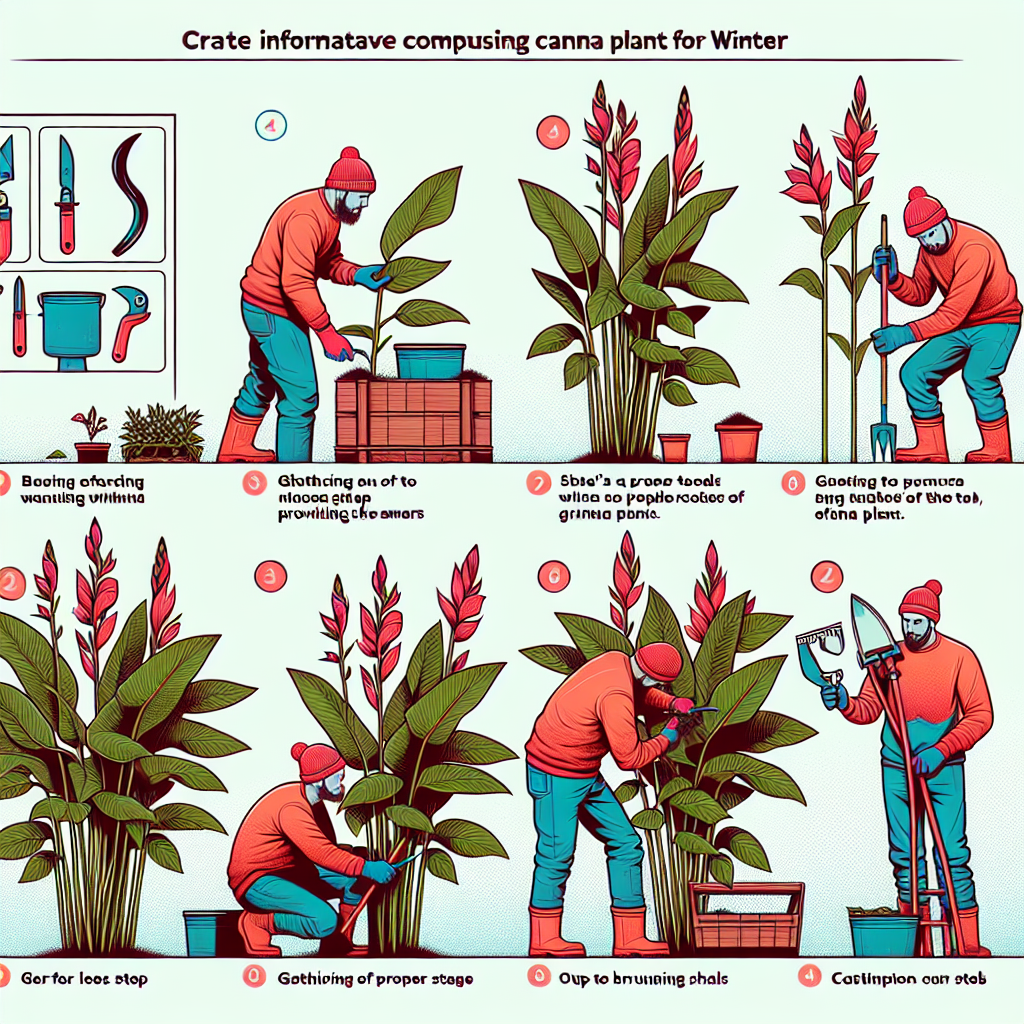
How to cut back cannas for winter
How to Prepare Cannas for Winter: A Complete Guide
Cannas are vibrant and stunning flowering plants that can add a tropical feel to gardens and landscapes. However, as the colder months approach, it is essential to take care of your canna plants to ensure they return healthily in the spring. One essential aspect of this preparation involves understanding how to cut back cannas for winter. This article will guide you through the steps, tips, and best practices for successfully winterizing your canna plants.
Understanding Cannas and Their Growing Conditions
Before diving into the winter care of cannas, it is vital to understand their botanical characteristics and growing preferences.
- Origin: Cannas are native to the tropical regions of Central and South America.
- Sunlight: They thrive in full sun but can tolerate partial shade.
- Soil: Cannas prefer rich, well-draining soil with ample moisture.
These plants are not frost-tolerant and should be treated differently based on the climate in which they’re grown. That brings us to the importance of knowing how to cut back cannas for winter and ensuring they are ready for the cold months.
Why Is It Important to Prepare Cannas for Winter?
Preparing your cannas for winter is crucial for several reasons:
- Health of the Plant: Proper preparation prevents rot and diseases in the bulbs or rhizomes.
- Regrowth in Spring: Correct care increases the likelihood of successful regrowth in the spring.
- Protection from Pests: Reducing the size of the plant can limit pest habitat during colder months.
A little effort during the fall will pay off when your garden blooms again in spring. Let’s break down the steps on how to cut back cannas for winter effectively.
When to Cut Back Cannas
The timing for cutting back cannas is vital for ensuring they survive the winter. Here’s what to consider:
- Wait until the first frost hits your area, as this will signal the plants to enter dormancy.
- Check for yellowing leaves; this indicates that the plant is heading into dormancy.
- Avoid cutting back too early; this can stress the plants and disrupt their natural lifecycles.
Steps for Cutting Back Cannas
Once you've determined that it’s time for cutting back, follow these straightforward steps:
- Gather Your Tools: You will need a sharp garden spade or shears, gloves to protect your hands, and a garbage bag or compost bin for debris.
- Remove the Flowers: Cut off the spent blooms first. This helps the plants redirect their energy to the roots.
- Cut Back Foliage: Trim the foliage down to about 6-12 inches above ground level. Avoid cutting too close to the rhizomes.
- Inspect for Pests: Check the cut areas for any signs of pests or diseases. Take action if necessary.
- Clean Up: Dispose of cuttings and clean up any debris from around the plant to prevent diseases overwintering in the soil.
- Mulching: Apply a layer of mulch over the rhizomes to provide extra insulation over winter.
Post-Cutting Care
Once you've successfully cut back your cannas, there are additional steps that you can take to prepare them for the cold months.
- Watering: Water your plants one last time before frost to keep the soil moist but not waterlogged.
- Fertilization: Avoid fertilizing your canna plants in late summer and fall, as they do not need extra nutrients once they begin to go dormant.
Storage of Canna Rhizomes
In climates where winters are particularly harsh, you may choose to dig up the rhizomes for storage instead of leaving them in the ground. Here’s how to do it:
- Carefully Dig Up the Rhizomes: Using a spade, lift the rhizomes gently from the soil. Be careful not to damage them.
- Clean and Dry: Rinse off excess soil and let them dry for a few days in a shaded spot.
- Storage: Store the rhizomes in a paper bag or cardboard box surrounded by peat moss or shredded newspaper, in a cool, dry, and dark environment.
Common Mistakes to Avoid
Knowing how to cut back cannas for winter can save your plants from unnecessary stress. Here are some common mistakes to avoid:
- Cutting Back Too Early: Cutting back before the first frost can lead to damage.
- Improper Storage Conditions: Storing rhizomes in damp conditions can cause rot.
- Skipping on Cleanup: Leaving old foliage can lead to pest infestations and disease.
Conclusion
In summary, how to cut back cannas for winter involves understanding when to cut, how to cut, and what follow-up care is needed. Following these steps ensures your canna plants are prepared to withstand the winter months while also laying a solid foundation for vibrant blooms when spring returns.
By investing time and care into your canna plants as winter approaches, you can enjoy a breathtaking garden in the warmer months. Remember to monitor the climatic conditions and take appropriate steps accordingly. Happy gardening!
By Guest, Published on September 16th, 2024